The Panneaux Code de la Route PDF is a comprehensive guide to French road signs‚ essential for safe driving. It categorizes signs into warning‚ prohibition‚ mandatory‚ and information types‚ helping drivers understand their meanings and applications. This resource is invaluable for both French residents and tourists‚ providing clear visuals and explanations to ensure road safety and compliance with traffic regulations. The PDF format makes it easy to access and study‚ offering a practical tool for mastering France’s road signage system.
Overview of the Importance of Road Signs in France
Understanding road signs in France is essential for safe and efficient driving. Road signs play a critical role in maintaining road safety‚ reducing accidents‚ and ensuring smooth traffic flow. The standardized system‚ outlined in the “Panneaux Code de la Route PDF”‚ provides clear visual and written instructions for drivers. These signs are categorized into warning‚ prohibition‚ mandatory‚ and information signs‚ each serving a distinct purpose. Additional panels and temporary signs further enhance communication‚ especially in construction zones or dynamic traffic conditions. Familiarity with these signs is crucial for all road users‚ including drivers‚ pedestrians‚ and cyclists‚ to navigate France’s roads confidently and safely.
Why Understanding Traffic Signs is Crucial for Safe Driving
Understanding traffic signs is vital for ensuring road safety and legal compliance in France. These signs provide critical information to drivers‚ helping them anticipate hazards‚ navigate roads‚ and follow traffic laws. Misinterpreting or ignoring signs can lead to accidents‚ fines‚ or even loss of driving privileges. The “Panneaux Code de la Route PDF” offers a comprehensive guide to recognizing and understanding these signs. By mastering traffic signs‚ drivers can make informed decisions‚ reduce risks‚ and contribute to a safer driving environment. This knowledge is especially important for new drivers or those unfamiliar with French road regulations.
How to Use PDF Resources for Learning Traffic Signs
Mastering French traffic signs is made easier with the “Panneaux Code de la Route PDF”. Start by reviewing the document section by section‚ focusing on sign categories like warning‚ prohibition‚ and mandatory signs. Use the PDF’s visual aids and descriptions to identify shapes‚ colors‚ and meanings. Interactive features‚ such as quizzes or flashcards‚ can enhance retention. For non-native French speakers‚ pay attention to translations and contextual examples. Regularly practicing with the PDF ensures familiarity and confidence. By leveraging this resource‚ learners can grasp traffic rules efficiently‚ making it an essential tool for safe and compliant driving in France.
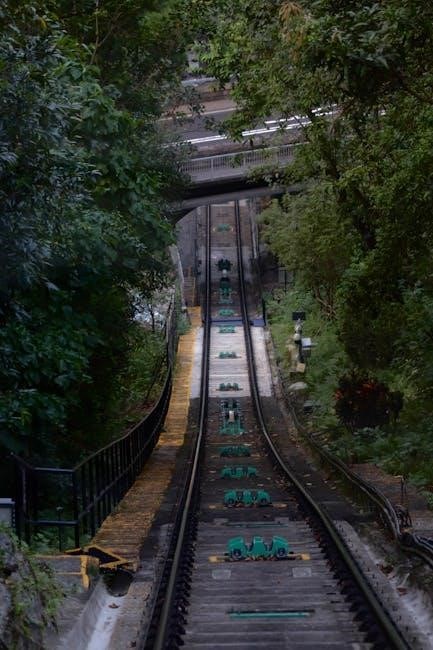
Categories of Road Signs
The French road signs are divided into four main categories: warning‚ prohibition‚ mandatory‚ and information signs. Each category serves a distinct purpose in guiding drivers safely.
- Warning signs alert drivers to potential hazards.
- Prohibition signs indicate actions that are not allowed.
- Mandatory signs show obligations that must be followed.
- Information signs provide guidance and directions.
Warning Signs
Warning signs in the French road code are essential for alerting drivers to potential hazards. These signs are typically triangular‚ with a yellow background and red border‚ ensuring high visibility. They are designed to prepare drivers for upcoming situations that may require caution‚ such as pedestrian crossings‚ sharp turns‚ or roadwork. Common examples include signs indicating “Attention” or “Virage” (bend). Their standardized design and placement help drivers react appropriately‚ reducing the risk of accidents. Understanding these signs is crucial for safe navigation‚ especially in unfamiliar areas. They serve as proactive measures to enhance road safety and ensure smooth traffic flow.
Prohibition Signs
Prohibition signs in the French road code indicate actions that are not permitted. These signs are circular with a white or light background‚ often featuring a red border and a diagonal line. They are designed to clearly communicate restrictions‚ such as “Arrêt” (Stop) or “Sens interdit” (No Entry). Their distinctive design ensures immediate recognition‚ helping drivers adhere to traffic rules. Examples include signs prohibiting certain vehicles or indicating no overtaking. Understanding these signs is vital to avoid violations and ensure compliance with road regulations. They play a critical role in maintaining order and safety on French roads‚ preventing illegal maneuvers and reducing accidents.
Mandatory Signs
Mandatory signs in the French road code are circular with a blue background and white symbols or text. They indicate actions that must be taken‚ such as “Tous droits” (All Directions) or “Passage obligatoire” (Compulsory Passage). These signs are essential for ensuring drivers follow specific traffic rules‚ like proceeding straight ahead or turning in a particular direction. Their blue color and distinctive shape make them easily recognizable. Mandatory signs are crucial for maintaining orderly traffic flow and ensuring compliance with legal requirements. They guide drivers through intersections‚ roundabouts‚ and other critical points‚ helping to prevent confusion and accidents. Understanding these signs is key to safe and lawful driving in France.
Information Signs
Information signs in the French road code are rectangular‚ typically with a blue background and white text or symbols. They provide essential guidance to drivers‚ such as directions‚ distances‚ or services ahead. These signs help navigate roads effectively by indicating locations like petrol stations‚ restaurants‚ or rest areas. They often feature arrows or diagrams to guide motorists toward specific destinations. Information signs are crucial for reducing driver stress and enhancing overall road safety. By clearly presenting relevant details‚ they enable drivers to make informed decisions while maintaining focus on the road. These signs are indispensable for both locals and tourists‚ ensuring smooth navigation across France.
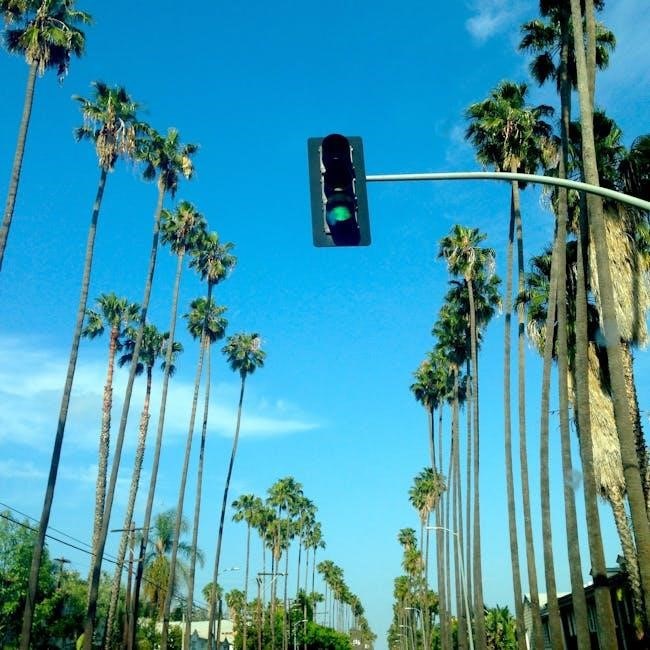
Warning Signs
Warning signs alert drivers to potential hazards‚ such as curves‚ intersections‚ or pedestrian crossings. They are triangular with a red border and yellow background‚ ensuring early driver reaction.
Shapes and Colors of Warning Signs
Warning signs in France are standardized to ensure clarity and quick recognition. They are typically triangular‚ with a yellow background and red border‚ making them highly visible. The triangular shape is universally recognized as a warning symbol‚ while the yellow and red colors emphasize urgency and caution. These signs often feature black pictograms or text‚ providing clear information about the hazard ahead‚ such as curves‚ intersections‚ or pedestrian crossings. Their distinctive design ensures drivers can react promptly to potential dangers. The consistency in shape and color across all warning signs helps maintain road safety and reduces confusion for all users of the road.
Common Examples of Warning Signs
Warning signs in France are essential for driver awareness and safety. Common examples include the pedestrian crossing sign‚ indicating a nearby crosswalk‚ and the traffic light ahead sign‚ alerting drivers to an upcoming intersection. Another frequent warning is the bend or curve sign‚ which signals a sharp turn in the road. Additionally‚ the school zone sign is widely recognized‚ warning drivers of pedestrian children. These signs are designed with clear visuals to ensure quick comprehension. They are placed strategically to give drivers ample time to react. Familiarity with these signs is crucial for safe and compliant driving in France.
Special Cases and Exceptions
Special cases and exceptions in French road signs are designed to address unusual or specific situations. For instance‚ detour signs guide drivers around road closures‚ while emergency access signs indicate priority lanes for emergency vehicles. Additionally‚ weather-related signs‚ such as snowflake symbols‚ warn of slippery roads in certain regions. These signs often include supplementary panels‚ known as panonceaux‚ to provide additional context. Special cases may also involve temporary adjustments to speed limits or traffic flow during events or construction. Recognizing these exceptions is vital for safe navigation‚ as they override standard rules under specific conditions. They ensure drivers adapt to unique circumstances efficiently.
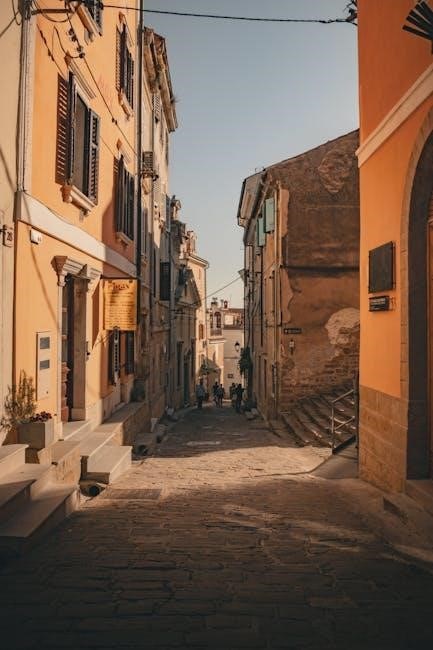
Prohibition Signs
Prohibition signs in France are circular with red borders and white backgrounds. They restrict actions like entry or turning‚ ensuring traffic safety and order. Stop and No Entry are common examples.
Design and Recognition of Prohibition Signs
Prohibition signs in France are easily recognizable due to their distinct design. They are circular in shape‚ featuring a red border and a white background. The red color signifies a restrictive action‚ while the circular shape is universally associated with prohibitions. These signs often include a black symbol or text within the white area‚ indicating the specific restriction‚ such as a prohibition of entry or pedestrian access restriction. The bold colors and straightforward visuals ensure clarity‚ even at a distance. This consistent design helps drivers quickly comprehend the restrictions‚ making them critical for maintaining traffic order and safety on French roads.
Examples of Common Prohibition Signs
Common prohibition signs in France include the “Stop” sign‚ which requires drivers to come to a complete halt. Another is the “No Entry” sign‚ often seen at one-way streets or restricted areas. The “No Parking” sign indicates where vehicles cannot be left unattended. Additionally‚ the “No U-Turn” sign prohibits reversing directions on a roadway. There’s also the “Maximum Speed Limit” sign‚ which sets the highest allowable speed in a specific zone. These signs are essential for enforcing traffic rules and maintaining order on the road. Their clear design ensures drivers can quickly understand and comply with the restrictions in place.
Understanding the Scope of Prohibitions
Prohibition signs in France establish clear restrictions to ensure safe and orderly traffic flow. These signs outline specific actions or behaviors that drivers must avoid‚ such as entering certain zones‚ exceeding speed limits‚ or making prohibited turns. For example‚ the “No Entry” sign prohibits access to a street or area‚ while the “No Parking” sign restricts leaving a vehicle in a designated zone. These prohibitions are enforceable by law‚ and ignoring them can result in fines or penalties. The scope of prohibitions extends to all road users‚ including pedestrians and cyclists‚ ensuring compliance with traffic regulations for everyone’s safety. Understanding these restrictions is vital for legal and responsible driving practices.

Mandatory Signs
Mandatory signs in France indicate actions drivers must take‚ such as turning left or right‚ ensuring compliance with traffic rules and road safety standards.
Recognizing Mandatory Signs by Design
Mandatory signs in France are easily identifiable by their unique design. They feature a blue background with a white interior‚ often shaped as a circle. The symbols within these signs are straightforward‚ such as arrows indicating direction or pictograms showing required actions. Their bold colors and simple shapes ensure quick recognition‚ even from a distance. The blue and white combination stands out against most environments‚ making them highly visible. These signs are crucial for directing traffic flow and ensuring driver compliance with specific regulations. Understanding their design helps drivers interpret their meanings effortlessly‚ contributing to safer and more efficient road navigation across France.
Examples of Mandatory Signs
Mandatory signs in France are essential for guiding drivers through specific actions they must follow. One common example is the “Pass on the Right” sign‚ indicating that overtaking is allowed only on the right side. Another is the “Go Straight” sign‚ directing drivers to continue without turning. The “Turn Left/Right Ahead” signs are also mandatory‚ ensuring drivers prepare for upcoming turns. These signs feature a blue background with white arrows or symbols‚ making them easily recognizable. Understanding and obeying these signs is crucial for maintaining smooth traffic flow and avoiding penalties.
- Pass on the Right
- Go Straight
- Turn Left/Right Ahead
These signs are designed to be clear and unambiguous‚ ensuring compliance with traffic laws.
Understanding Obligations
Mandatory signs in France outline specific actions drivers must take to ensure legal and safe driving. These signs are circular with a blue background and white symbols‚ indicating obligations such as turning right‚ proceeding straight‚ or giving priority. They are enforceable by law‚ and ignoring them can result in penalties. Understanding these signs is crucial for road safety‚ as they guide drivers through intersections‚ roundabouts‚ and priority lanes. By following mandatory signs‚ drivers contribute to smooth traffic flow and reduce accident risks. Familiarizing oneself with these signs is essential for both residents and visitors to navigate French roads confidently and legally.
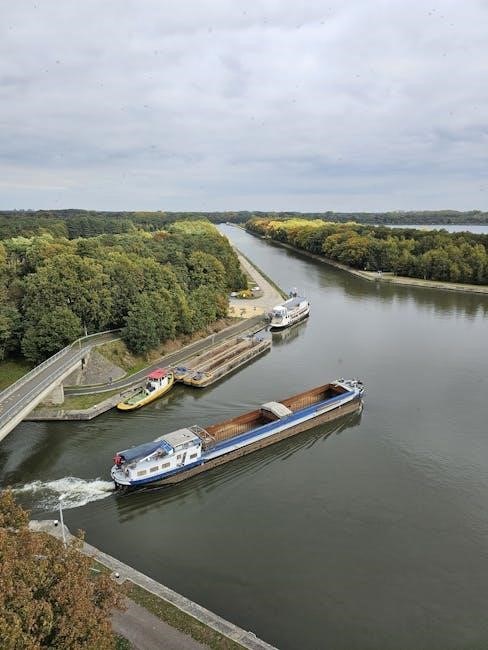
Information Signs
Information signs provide guidance‚ directions‚ and essential details to drivers‚ enhancing navigation and road safety. They are typically blue or green‚ offering clear visual cues for decision-making.
Types of Information Signs
Information signs in France are designed to guide drivers and provide essential information about the road network. They are typically blue or green in color‚ making them easily recognizable. These signs can be categorized into directional signs‚ which indicate directions to cities or landmarks‚ service signs‚ which point to facilities like rest areas or gas stations‚ and tourist information signs‚ which highlight cultural or natural attractions. Additionally‚ some information signs provide details about road conditions‚ such as toll roads or traffic restrictions. These signs are crucial for helping drivers navigate efficiently and make informed decisions during their journey.
Examples of Information Signs
Information signs in France are designed to guide drivers and provide essential details about the road ahead. Common examples include direction signs‚ which indicate directions to cities or landmarks‚ often with arrows and place names. Service area signs notify drivers of upcoming rest stops‚ gas stations‚ or restaurants‚ featuring icons for clarity. Tourist information signs highlight nearby attractions‚ such as museums‚ historical sites‚ or natural parks. Additionally‚ pedestrian zone signs indicate areas where vehicles must yield to walkers. These signs are strategically placed to ensure drivers can navigate safely and efficiently without unnecessary distractions. Their clear designs and standardized symbols make them easily recognizable.
Contextual Use of Information Signs
Information signs are strategically placed to guide drivers through specific contexts‚ ensuring clear navigation and informed decisions. These signs often appear near landmarks‚ intersections‚ or decision points‚ providing location-specific details. For example‚ Sortie signs indicate exits‚ while Prochaine Sortie alerts drivers to upcoming exits. Toutes Directions signs are commonly found at roundabouts‚ simplifying route choices. Contextual use ensures these signs are relevant to the immediate environment‚ reducing confusion and enhancing safety. By understanding their placement and purpose‚ drivers can better anticipate road conditions and make timely decisions‚ especially in unfamiliar areas. This contextual approach is vital for efficient and stress-free driving in France.

Temporary and Variable Signs
Temporary signs‚ like construction zone indicators‚ alert drivers to short-term changes. Variable signs‚ such as digital traffic updates‚ adapt to real-time conditions for efficient navigation.
Temporary Signage for Construction Zones
Temporary signage in construction zones plays a vital role in ensuring safety and maintaining traffic flow. These signs are specifically designed to alert drivers to changes in road conditions‚ such as lane closures‚ detours‚ or reduced speed limits. They are typically placed in areas where roadwork is ongoing to guide motorists safely through the zone. Temporary signs are often fluorescent orange with black text or symbols‚ making them highly visible even in low-light conditions. Examples include directional arrows‚ detour signs‚ and “roadwork ahead” warnings. Proper placement and compliance with French road sign regulations are essential to avoid confusion and ensure adherence to safety standards.
These temporary panneaux are usually erected by construction crews or traffic management teams. They must conform to the specifications outlined in the “Panneaux Code de la Route PDF” to maintain consistency and clarity. Drivers should always prioritize these signs over permanent ones‚ as they indicate temporary hazards or changes. Understanding and obeying temporary signage is crucial for preventing accidents and ensuring smooth traffic movement in construction zones.
Variable Signs for Traffic Management
Variable signs are essential for real-time traffic management‚ providing dynamic information to drivers. These signs are typically electronic or digital‚ displaying changing messages based on current conditions. They are often used on highways‚ urban roads‚ and at intersections to manage traffic flow efficiently. Examples include lane usage indicators‚ speed limit adjustments‚ and diversion alerts. These signs are controlled by traffic authorities and integrate with sensors and cameras to respond to incidents like accidents or congestion. Their flexibility allows for immediate adjustments‚ ensuring safer and smoother traffic movement. By leveraging technology‚ variable signs enhance road safety and reduce travel delays significantly. They are a cornerstone of modern traffic management systems.
Priority of Temporary Over Permanent Signs
In France‚ temporary road signs often take precedence over permanent ones to ensure safety in dynamic situations. This principle is crucial in construction zones‚ accidents‚ or special events‚ where conditions change rapidly. Temporary signs‚ such as detour arrows or reduced speed indicators‚ are designed to alert drivers to new risks or alternate routes; Drivers must prioritize these signs to maintain road safety and comply with legal obligations. For instance‚ a temporary “Stop” sign at a construction zone overrides a permanent traffic light. Recognizing and adhering to these temporary signs is essential to avoid accidents and legal violations.
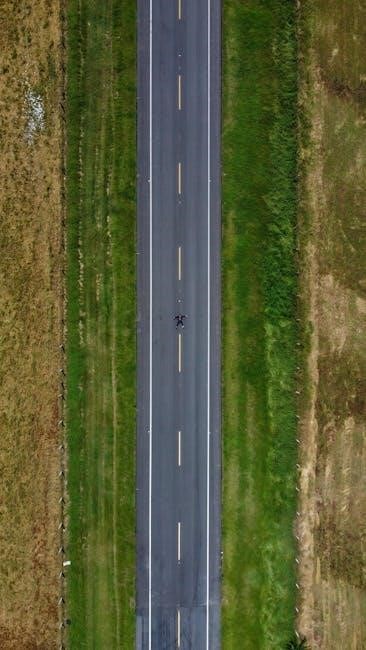
Additional Information Panels
Additional information panels provide supplementary details to main road signs‚ enhancing clarity. They often include directions‚ distances‚ or specific conditions‚ ensuring comprehensive guidance for drivers. Panonceaux are key examples.
Panonceaux: Supplementary Information
Panonceaux are supplementary panels that provide additional information to the main road signs. They are placed below or alongside the primary signs to clarify or extend the message. These panels are essential for drivers to understand specific details‚ such as directions‚ distances‚ or exceptions. For example‚ a panneau might indicate the specific lanes affected by a restriction or provide arrows showing the direction of a detour. They enhance the clarity of the main sign‚ ensuring drivers can interpret the information accurately. Panonceaux are designed to be simple and concise‚ avoiding unnecessary complexity while offering crucial context for safe navigation.
Examples of Panonceaux
Panonceaux are supplementary information panels that accompany main road signs to provide additional context. Common examples include panels indicating exceptions‚ such as “Excepté les véhicules autorisés” (except authorized vehicles)‚ often placed below no-entry signs. Another example is “Prochain passage piétons 200m”‚ which alerts drivers to an upcoming pedestrian crossing. Panels like “Déviation à 500m” guide drivers through detours. These signs enhance clarity and ensure drivers understand specific conditions or exceptions‚ making them indispensable for safe navigation. They are designed to be concise and easily understandable at a glance‚ ensuring effective communication of supplementary information.
Understanding the Extended Scope
The extended scope of additional information panels‚ or panonceaux‚ goes beyond basic supplementary details‚ offering comprehensive guidance for drivers. These panels often accompany main road signs‚ providing context such as directions‚ distances‚ or specific conditions. For instance‚ they might indicate arrows for turning directions or distances to the next exit. Their design typically features a white background with black text or symbols‚ ensuring clarity. Understanding their extended scope is crucial as they enhance the effectiveness of main signs‚ helping drivers make informed decisions. By integrating with other signage‚ these panels create a cohesive system that prioritizes road safety and efficiency.
Specialized Signs
Specialized signs provide specific guidance for unique situations‚ such as directional indicators for roundabouts or localisation signs for tourist zones. These signs enhance navigation and safety in complex areas.
Directional Signs
Directional signs are essential for guiding drivers toward specific destinations‚ ensuring smooth navigation on French roads. These signs typically feature arrows or place names‚ often accompanied by symbols‚ to indicate directions to cities‚ landmarks‚ or services. Their design is standardized‚ with a rectangular shape and a white background‚ complemented by blue or green arrows for motorway directions. They are strategically placed at intersections‚ roundabouts‚ and near exits to provide clear guidance. Examples include “Sortie” for exits and “Toutes Directions” for multiple routes. Directional signs help reduce confusion‚ especially in unfamiliar areas‚ and are crucial for maintaining traffic flow and safety.
Localisation Signs
Localisation signs in France are designed to help drivers understand their geographical position and proximity to key locations. These signs typically indicate nearby cities‚ regions‚ or landmarks‚ aiding navigation‚ especially for tourists or unfamiliar drivers. They are often rectangular with a yellow background and black text‚ making them easily recognizable. Examples include signs displaying distances to major cities or regional markers. These signs complement directional signs by providing contextual information‚ enhancing overall traffic management. They are essential for efficient route planning and ensuring drivers stay informed about their surroundings. The “Panneaux Code de la Route PDF” guide provides detailed visuals and explanations of these signs.
Combined and Contextual Signs
Combined and contextual signs are designed to convey multiple pieces of information in a single panel‚ ensuring clarity and reducing visual clutter. These signs often merge directional‚ informational‚ or regulatory elements‚ making them essential for complex intersections or areas with multiple routes. Contextual signs adapt to specific locations‚ providing relevant details such as nearby attractions‚ services‚ or detours. Their design typically features bold colors and clear symbols‚ ensuring quick comprehension. For example‚ a sign might combine arrows indicating directions with icons for restaurants or rest areas. Understanding these signs is crucial for efficient navigation and safe driving‚ especially in unfamiliar regions. They enhance readability and driver decision-making.
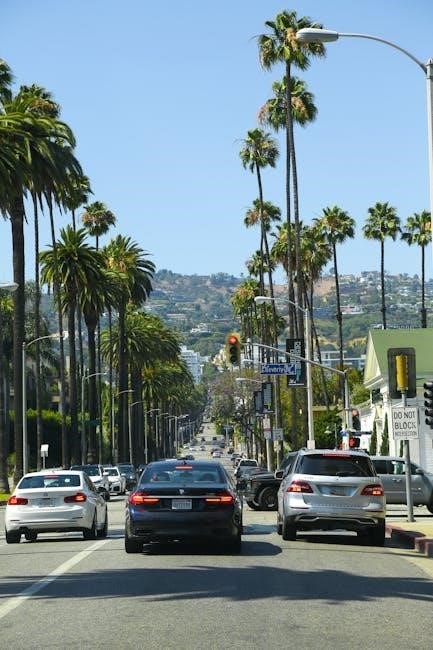
Learning Resources
Access comprehensive Panneaux Code de la Route PDF guides online‚ offering detailed visuals and explanations of French road signs. Utilize interactive PDFs with quizzes and flashcards for better retention. Regular practice ensures mastery of traffic rules and safe driving practices in France.
Downloading the Complete PDF Guide

Downloading the complete Panneaux Code de la Route PDF is a straightforward process that provides access to all French road signs and their explanations. Official government websites and trusted sources offer free downloads‚ ensuring you have the most up-to-date information. The PDF guide is designed to be user-friendly‚ with clear visuals and detailed descriptions. It includes all categories of signs‚ from warning to mandatory‚ along with examples and contextual uses. The guide is compatible with all devices‚ allowing learners to study on the go. By downloading‚ you gain a comprehensive resource to master French road signs‚ essential for safe and confident driving.
Interactive PDFs for Better Retention
Interactive Panneaux Code de la Route PDF resources offer engaging ways to learn traffic signs‚ enhancing retention through active participation. These PDFs often include quizzes‚ flashcards‚ and clickable exercises that test knowledge and provide immediate feedback. Such interactivity helps users identify gaps in their understanding and reinforces learning. Visual elements like images and videos can also be embedded‚ making complex signs easier to comprehend. Additionally‚ interactive navigation features like bookmarks and hyperlinks allow users to easily revisit sections‚ ensuring a structured and efficient study process. This dynamic approach makes learning traffic signs more enjoyable and effective compared to static materials.
Using Online Resources Effectively
Mastering French road signs is made easier with online resources like the “Panneaux Code de la Route PDF.” These tools offer interactive features such as quizzes‚ flashcards‚ and searchable databases. Interactive PDFs allow users to test their knowledge and track progress‚ enhancing retention. Searchable databases enable quick reference for specific signs‚ while video tutorials provide visual learning. To maximize effectiveness‚ combine these resources with the PDF guide for a comprehensive understanding. Regular practice and review ensure familiarity with all sign categories. Online forums and communities also offer support and tips for challenging topics. Utilize these tools consistently to become proficient in recognizing and interpreting road signs efficiently.